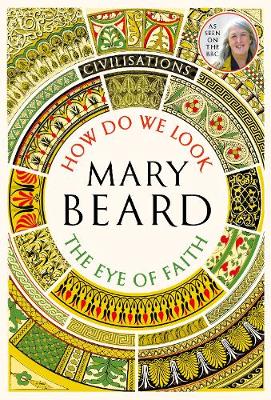Civilisations
2 total works
Focusing on the arrival of the human figure as a subject of art, Mary Beard examines the history of beauty in civilisation.
Beginning with the Jericho painted skulls from 10,000 years ago, and the extraordinary figures of Ain Ghazal. It examines in depth the creativity that gave...Read more
Beginning with the Jericho painted skulls from 10,000 years ago, and the extraordinary figures of Ain Ghazal. It examines in depth the creativity that gave...Read more
Focusing on the arrival of the human figure as a subject of art, Mary Beard examines the history of beauty in civilisation.
Beginning with the Jericho painted skulls from 10,000 years ago, and the extraordinary figures of Ain Ghazal. It examines in depth the creativity that gave identity to ancient Egypt, where colossi of powerful rulers were also matched by the depictions of citizens and the wider population. From there, we explore the unprecedented art of the Greek revolution, where beauty and the perfection of the human figure set a benchmark for all Western art to come, and profoundly influenced the flowering of human sculpture in Rome. Finally, it moves to China to examine the vast army of Terracotta Warriors commissioned by the first emperor, and ends with the unexpected figure of Monk Wuxia, a mummified Buddhist monk created from the body of the monk himself.
Beginning with the Jericho painted skulls from 10,000 years ago, and the extraordinary figures of Ain Ghazal. It examines in depth the creativity that gave identity to ancient Egypt, where colossi of powerful rulers were also matched by the depictions of citizens and the wider population. From there, we explore the unprecedented art of the Greek revolution, where beauty and the perfection of the human figure set a benchmark for all Western art to come, and profoundly influenced the flowering of human sculpture in Rome. Finally, it moves to China to examine the vast army of Terracotta Warriors commissioned by the first emperor, and ends with the unexpected figure of Monk Wuxia, a mummified Buddhist monk created from the body of the monk himself.
Companion to the BBC documentary series CIVILISATIONS, presented by Mary Beard, David Olusoga and Simon Schama
The idea of 'civilisation' has always been debated, even fought over. At the heart of those debates lies the big question of how people - from prehistory to the present day -...Read more
The idea of 'civilisation' has always been debated, even fought over. At the heart of those debates lies the big question of how people - from prehistory to the present day -...Read more
Companion to the BBC documentary series CIVILISATIONS, presented by Mary Beard, David Olusoga and Simon Schama
The idea of 'civilisation' has always been debated, even fought over. At the heart of those debates lies the big question of how people - from prehistory to the present day - have depicted themselves and others, both human and divine. Distinguished historian Mary Beard explores how art has shaped, and been shaped by, the people who created it. How have we looked at these images? Why have they sometimes been so contentious?
In Part One, she examines how the human figure was portrayed in some of the earliest art in the world - from the gigantic stone heads carved by the Olmec of Central America to the statues and pottery of the ancient Greeks to the terracotta army of the first emperor of China. And she explains how one particular version of representing the human body, which goes back to the ancient world, still influences (and sometimes distorts) how people in the West see their own culture and that of others. Throughout this story, she is concerned not only with the artists who made images, but with those who have used them, viewed them and interpreted them. In other words: How Do We Look?
In Part Two, Mary Beard turns to the relationship between art and religion. For centuries, religion has inspired art: from the Hindu temple at Angkor Wat to the Christian mosaics of Ravenna to the exquisite calligraphy of Islamic mosques. But making the divine visible in the human world has never been simple. All religions have wrestled with idolatry and iconoclasm, destroying art as well as creating it - and asking how to look with The Eye of Faith.
The idea of 'civilisation' has always been debated, even fought over. At the heart of those debates lies the big question of how people - from prehistory to the present day - have depicted themselves and others, both human and divine. Distinguished historian Mary Beard explores how art has shaped, and been shaped by, the people who created it. How have we looked at these images? Why have they sometimes been so contentious?
In Part One, she examines how the human figure was portrayed in some of the earliest art in the world - from the gigantic stone heads carved by the Olmec of Central America to the statues and pottery of the ancient Greeks to the terracotta army of the first emperor of China. And she explains how one particular version of representing the human body, which goes back to the ancient world, still influences (and sometimes distorts) how people in the West see their own culture and that of others. Throughout this story, she is concerned not only with the artists who made images, but with those who have used them, viewed them and interpreted them. In other words: How Do We Look?
In Part Two, Mary Beard turns to the relationship between art and religion. For centuries, religion has inspired art: from the Hindu temple at Angkor Wat to the Christian mosaics of Ravenna to the exquisite calligraphy of Islamic mosques. But making the divine visible in the human world has never been simple. All religions have wrestled with idolatry and iconoclasm, destroying art as well as creating it - and asking how to look with The Eye of Faith.


